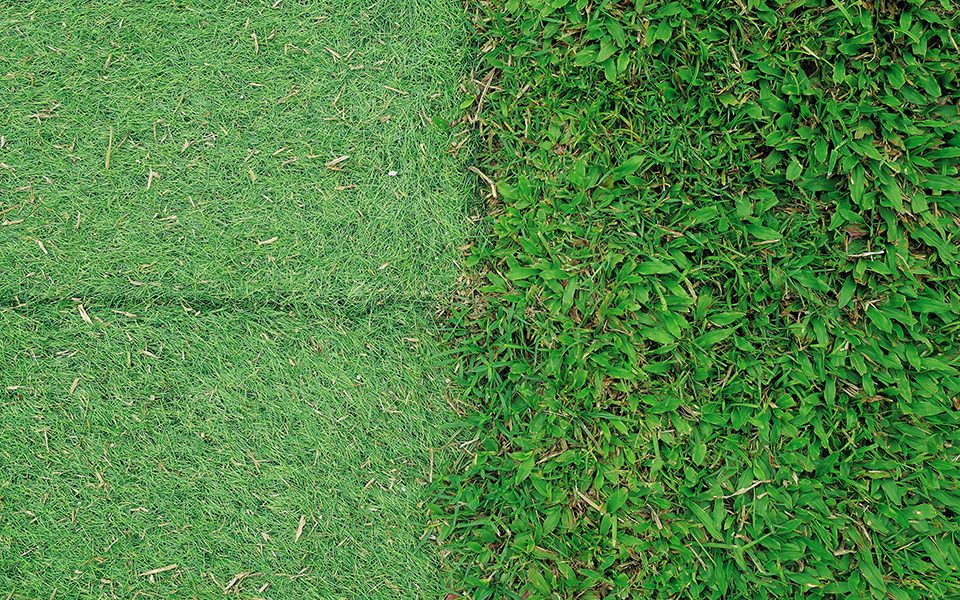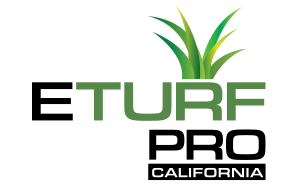Turf vs Grass
Aesthetically, a lawn is an essential outdoor part of any living area, creating an appealing first impression to most guests. Apart from the aesthetics benefits, lawns offer several other benefits, including serving as a playground for kids. Thankfully, technological advancements have given us the luxury of owning either an artificial grass lawn or natural grass lawn. Therefore, the big question is, what are the major differences between these two types of lawns; which of them is better? This turf vs. grass comparison article comprehensively explores the various artificial and real grass lawn properties, analyzing each lawn type under various categories.
Undoubtedly, many persons find it difficult to choose between natural grass or artificial grass lawn. This article aims to help you decide your most suitable option between the two lawn types. Let’s go!
Artificial Grass (Turf)
Made of synthetic fibers, Artificial grass is designed to chameleon the natural grass’s appearance, lasting up to 25 years with adequate maintenance. While some persons believe the turf appears too fake, we must understand that they are in various types, depending on varying factors, including material type, color, pile height, and others.
Turfs are largely made from three materials, nylon, polyethylene, and polypropylene. The pile height, also referred to the sizes of the turf, are manufactured in varying sizes and color – turfs, apart from green, are also available in blue, pink, etc.
Benefits of Turfs
Turfs offer numerous benefits, including easy maintenance. Unlike the natural grass lawn, turfs can be easily cleaned by rinsing and raking to remove dust and large debris. Asides from the maintenance advantage, artificial grass lawn doesn’t also need watering. This is particularly advantageous for regions where water scarcity is prominent, such as Southern California.
Turfs wear an appealing color throughout the year, regardless of the season. You do not need to worry over dying grasses or the presence of insects, warranting you to consider using harmful fungicides, pesticides, and even fertilizers. Summarily, artificial grass lawn is an excellent strategy to reduce carbon emissions, pollutants and preserve water.
Natural Grass
Most American homes typically embrace natural grass lawns. Several types of natural grass lawn exist, categorized under blade, growth, season, water requirements, and shades. Unlike turfs, artificial grass requires more maintenance. For instance, you must ensure you select the natural grass that suits your climate; otherwise, your efforts to grow a perfect lawn might ultimately turn out futile.
Fine fescue, Bermuda, ryegrass, tall fescue, and Kentucky bluegrass are the most popular grass species used for natural grass lawns. While some of these species have fast growth, some are either in bunches or averagely lower. Similarly, species’ blades vary, ranging from flat to narrow, sharp, hair-like, pointed, sometimes round.
Benefits of Natural Grass
Despite major maintenance concerns such as water usage and seasonality plaguing the usability of natural grass, this lawn type still offers major benefits. The naturality of this lawn encourages air quality improvement via purification, dissolving the air-borne pollutants present in the soil.
Natural grass also offers environmental benefits such as soil quality improvement, oxygen generation, surrounding area cooling, runoff reduction, etc.
Having understood the scope of both the artificial grass and natural grass lawn types, this turf vs. grass comparison will further explore the significant differences between them using crucial factors, such as their environmental impacts, installation costs, maintenance costs, and others.
Environmental Impact
It is essential to examine the environmental impacts of turfs and natural grass fields before installing them. Undoubtedly, the safety of our environment plays a significant role in determining the quality of health and life.
Of course, both grass types contribute both positive and harmful impacts on society, although one is arguably greater than the other.
The artificial grass field is particularly excellent for the environment because of its water-saving abilities. Water is a fundamental natural resource that contributes to life’s quality – water saving is a vital responsibility of every individual. However, turfs may partially contribute to atmospheric and land pollution through their manufacture and their unbiodegradable nature.
Natural grass field, on the contrary, partially contributes to the ecosystem’s health, offering oxygen, absorbing heat, and filtering pollution. Nevertheless, this lawn type also has a few cons, including the introduction of harmful pesticides to curb the growth of insects. Also, the insects bred by natural grasses may serve as water system contaminants.
Installation Costs
Natural grass fields are typically installed at lesser costs compared to turfs. Basically, the installation of synthetic turf fields depends on several factors, including labor, operation fees, materials used, company’s profit, and others. However, artificial grass lawns take a shorter time to get installed.
Natural grass lawns can be installed in two major ways, either through seeding or sodding. Sodding costs are relatively higher than seeding but significantly lesser than synthetic turf installation. You have to plan and nature the grass seeds yourself via the seeding methods or employ sodding, which features pre-grown grasses. Regardless, whether for sodding or seeding, you must install a sprinkler or irrigation system to ensure an adequate water supply and ultimate growth of the lawn.
Maintenance Costs
Natural grass fields are arguably harder to maintain. A competitive edge synthetic turfs have over natural grass lawns is their minimal maintenance requirements. Technically, artificial grass only needs watering, odor control, and brushing for adequate maintenance, except in some instances. Consequent to the reduced maintenance requirements, the costs of caring for and maintaining synthetic turf are lower than that of natural fields.
The maintenance requirements of natural grass lawns include edging, mowing, aeration, weed control, watering, fertilizing, etc. It costs a whole lot more than artificial grass fields. However, you can use a few cost-saving strategies to reduce your maintenance cost, including purchasing your equipment, handling the labor yourself, and others.
Final Thoughts: What Lawn Type Are You Choosing?
This article already outlined the individual benefits of natural grass and synthetic turfs, including the costs that accompany each lawn type. However, humans have unique preferences, incorporating various variables for consideration before choosing the best lawn type to install. However, the turf vs. grass comparison analyzed in this article will significantly help you make a better and more informed decision. Summarily, before choosing between an artificial grass or natural grass field, ensure you consider their installation costs, maintenance, costs, environmental impacts, amongst a few other factors.
For more information or to learn more about synthetic turf, do not hesitate to contact the experts at eTurf Pro to put you through our comprehensive custom turf installation process, ensuring your grass is green all year long!


